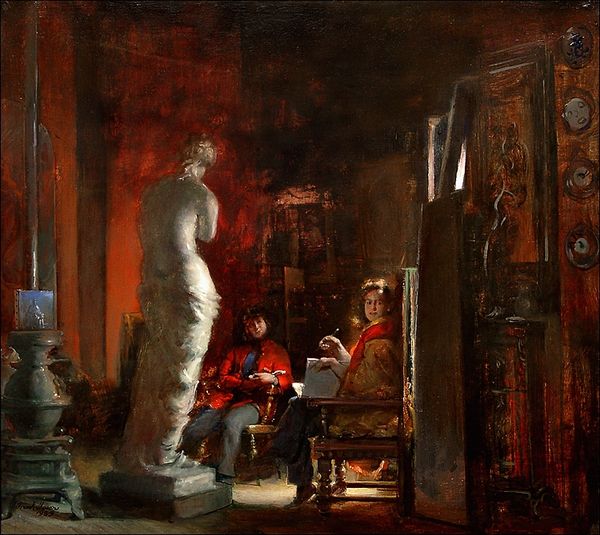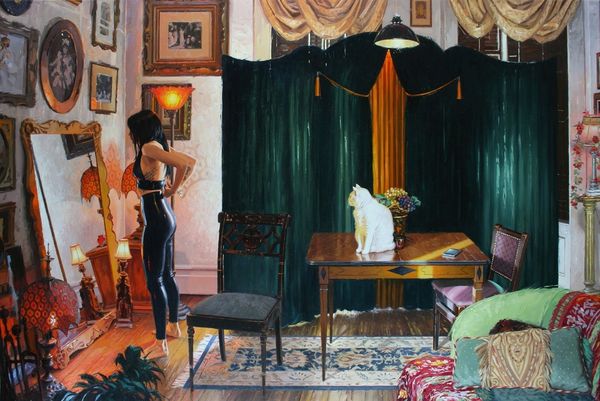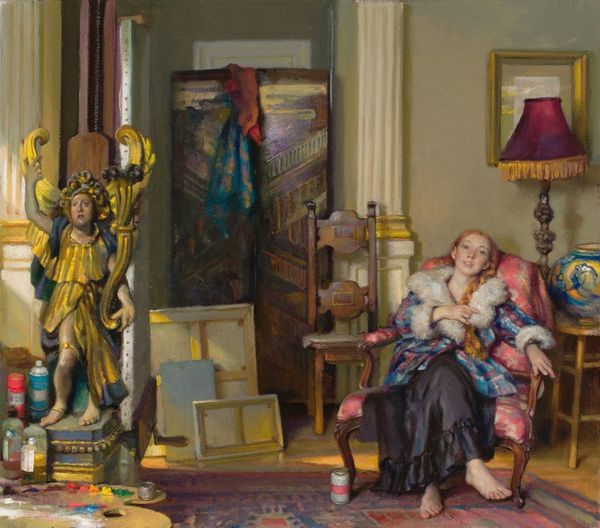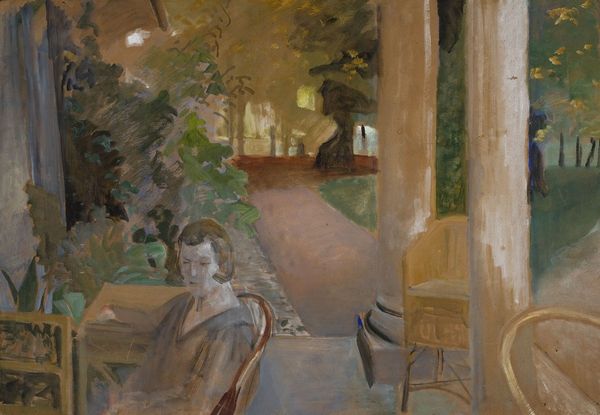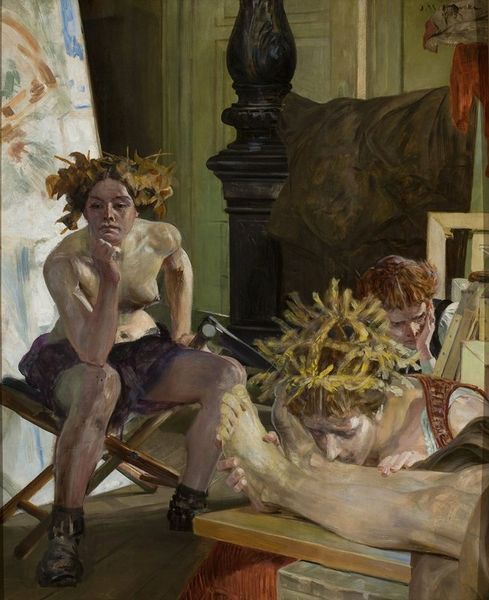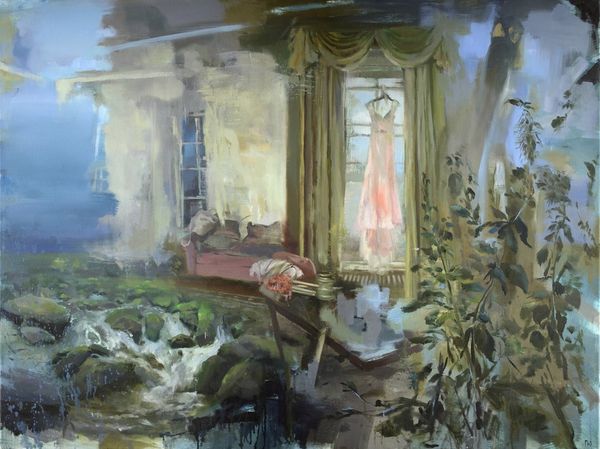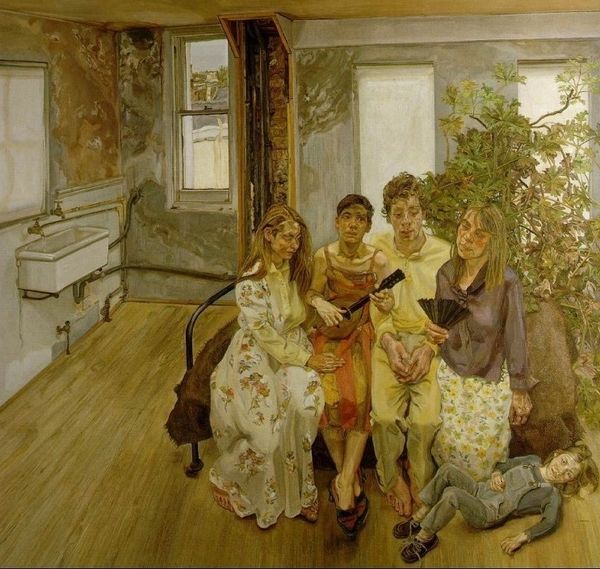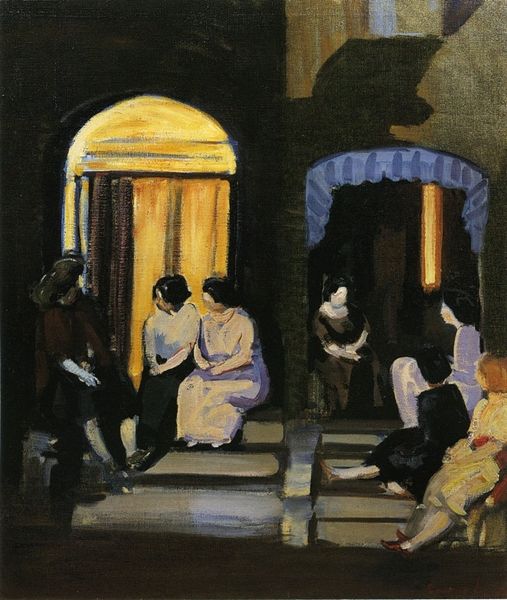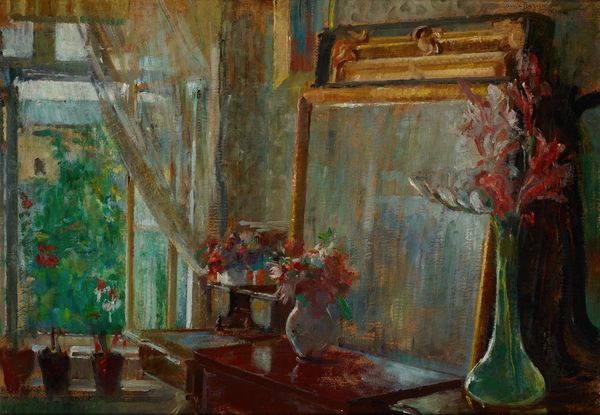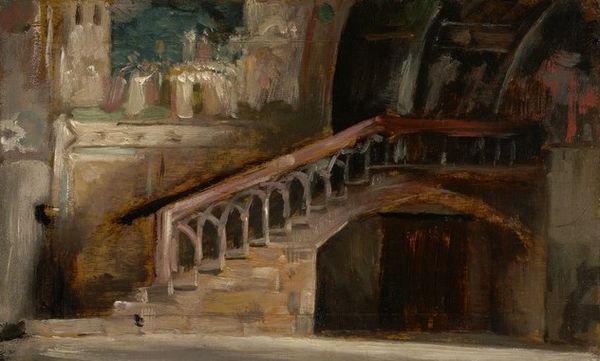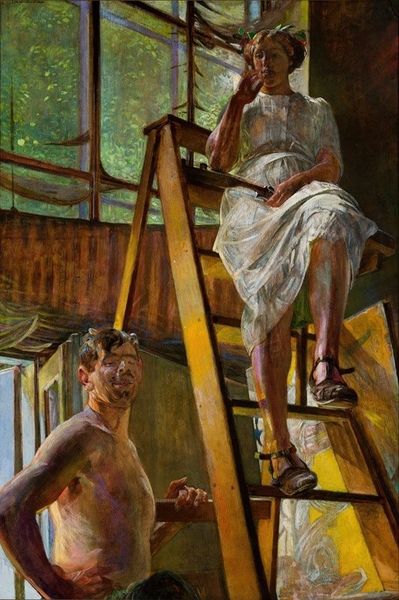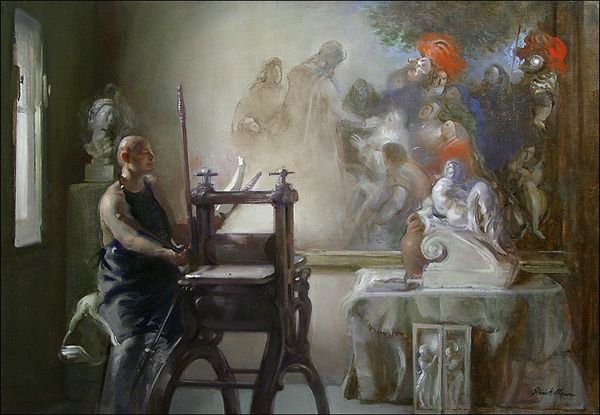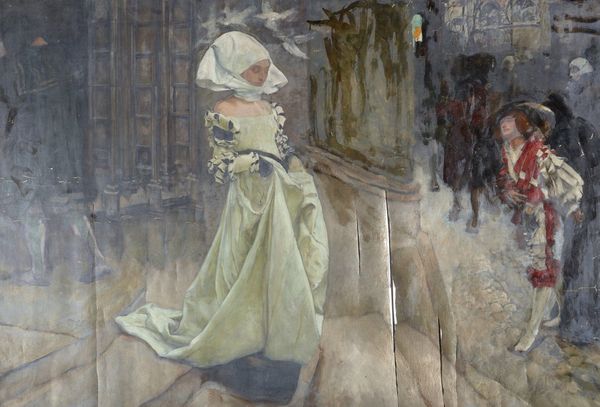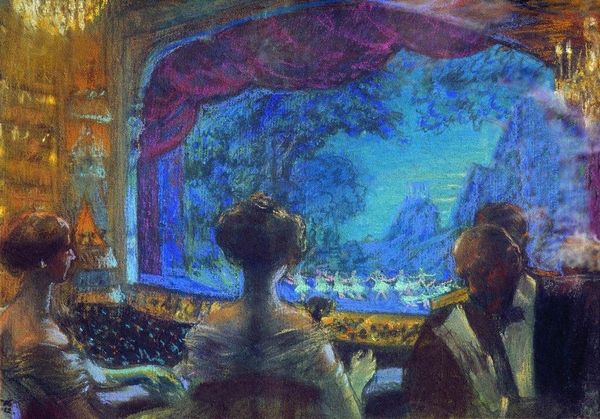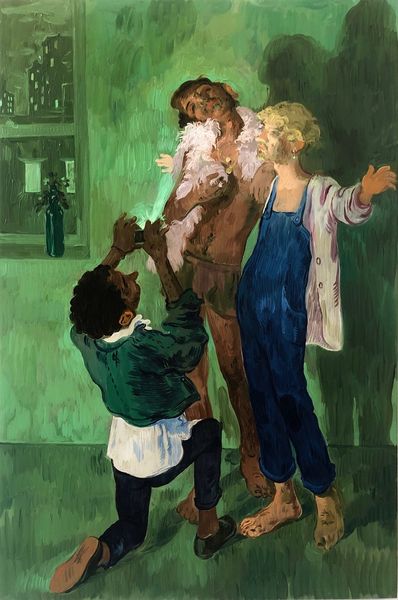
Copyright: Public Domain: Artvee
Editor: So, this is Charles Courtney Curran’s "At the Sculpture Exhibition," painted in 1895. The artist used oil and watercolor. I find the artwork calming but intriguing because of its various components; you get the sense of actually being there with them in the outdoor exhibition. How would you interpret this piece? Curator: I'm struck by how Curran uses the sculpture garden itself as a loaded symbol. Think about what sculpture meant in the late 19th century – a connection to classical ideals, a physical manifestation of beauty, morality, and civilization. And look, we see a bourgeois crowd, framed by these figures, engaging with high culture. How do you feel this contrast relates? Editor: That’s interesting; I hadn’t considered that contrast. The people appear relaxed, almost indifferent to the sculpture; however, there is a connection, in that they decided to visit the exhibition in the first place. Curator: Exactly. Curran's subtle touch hints at the commodification of art. The garden becomes a backdrop for social display, not pure contemplation. Consider how that reading reflects society's changing values. How has modernity influenced this social ritual? What happens when we start considering that this could represent gender roles or stereotypes that influence society? Editor: Hmm… you're right. The sculpture garden is a status symbol; this has broader connotations connected to society. Curator: And the light, the painterly brushstrokes… they soften the edges of that critique. Does that softness allow for the artwork to give a social commentary on women or social gatherings, particularly when you understand the symbols for that time? Curran invites us to reflect on what’s gained and what’s perhaps lost in this new, modern relationship to art and beauty. It's up to the viewer to evaluate how symbolism reflects the psychological perspective that modernity introduced in human gatherings. Editor: I've definitely gained a new perspective. Thinking about the sculpture garden as a symbol rather than just a setting really opens up the meaning. Curator: Indeed. It shows how even seemingly straightforward scenes can be rich tapestries of cultural memory and meaning if we analyze how symbols are interconnected with our understanding of the world.
Comments
No comments
Be the first to comment and join the conversation on the ultimate creative platform.
